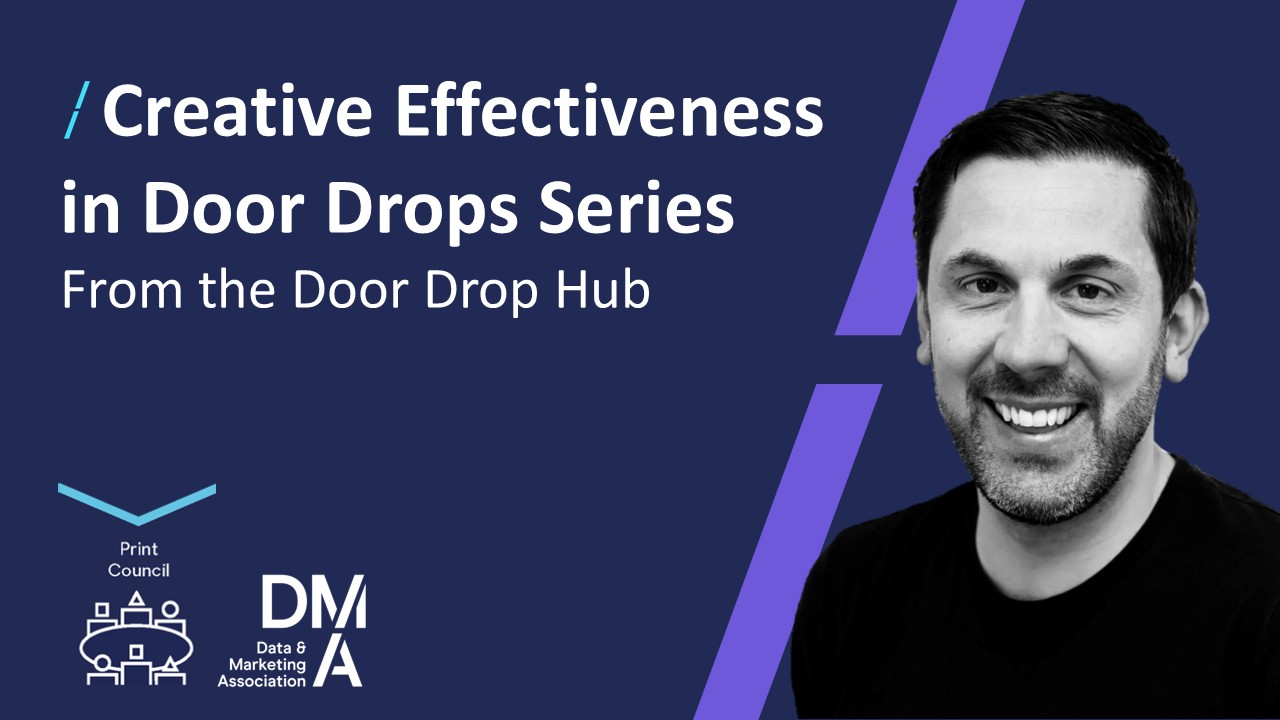FMCG media planners are missing a trick
12 Sep 2013
I believe FMCG marketers are missing a strategic trick on reaching target people and getting inside their heads. I’m going to call this trick ‘new advertising mail’ and anyone involved in FMCG should embrace it.
At the DMA’s Leaping off the page seminar in June, media guru David Brennan said no media channel is dead, it’s just how people use them in their buying journey that changes.
Then Mike Colling (MC&C), Linzi Clingan (Golden Charter), Liz Curry (Comic Relief), Tim Drye (Data Talk), and Sam Grimley (Blippar) shared nugget after nugget of proof on the power and place of advertising mail in the media and creative comms schedule and its impressive comparative ROIs.
Why digital cannot replace advertising mail
In 2004 Facebook launched and over the next six years the dazzle of digital pushed paper-based direct marketing aside. Hundreds of millions of pounds of shareholder funds in the form of marketing budget were hosed into the market on seemingly exciting, new wave digital campaigns, often however with questionable accountability.
So why during the last three years has there been a trend resurgence in advertising mail? (industry stats presented by Mark Young). Because quite frankly digital doesn’t turn people on all the time. More and more people are sick of the hijacking of social space by commerce. We’re all fazed by the volume of emails we have to manage every day. And on top of that, Twitterdom, World of Facebook, Linked In, Pinterest, blah blah and more blah blah.
What’s crucial is BALANCE. Not forgetting powerful response generating tools that work.
Of course the wibbly wobbly web and all its constituent elements and inventions are exciting and surprising. And the burgeoning real-time smartphone connection dynamics are frighteningly game changing.
Media planners wrong to ignore advertising mail
Printed advertising mail has fallen off the media mix radar and that’s stupid because consumers like it. CCB Fast.MAP has proved that. And the highest response from advertising mail comes from 18 to 25 year olds; the second highest after ‘busy housewives’.
Media agencies that control the majority of client budget in the UK don’t push it. Clients aren’t questioning what the media agencies recommend because in my experience they don’t know the right questions to ask. Brand and marketing managers in their late 20s and early 30s don’t know because when they started work eight to 10 years ago (after college, uni or apprenticeship) they were being bombarded by the digital wave. Direct mail was what their parents did.
So, all the learnings from decades of direct marketing testing by the likes of Stan Rapp, Tom Collins, Drayton Bird paled into old hat past annals. Why? Human nature hasn’t changed that much, just a few new gadgets and widgets enabling a wider choice of comms consumption.
So REDEPLOYMENT is key. David Brennan talks about the appeal of at home media like TV and mail because they’re consumed behind closed doors, pulling emotional strings that ‘nudge’ people positively way before they’re into the shopping melee.
Advertising mail in the digital age
Printed advertising mail works because it is tangible, tactile, durable, real/not virtual, in the main trusted, and ‘mine’.
The big difference post 2010 versus pre 2004 is creative digital technology using smartphones can now hugely enhance the 3D experience your target consumer enjoys from printed advertising mail, and seed, or obviate, or shorten the continuing journey online… whether it’s addressed ‘Dear Mr Smith’ or unaddressed advertising mail (which is 10 times cheaper) such as SMART-Drop direct promotional advertising. It’s cost effective too – the media cost is no more expensive than cheap broadcast TV, but way more targetable to prospect households in the UK you want to reach.
The moral of the story?
1) Media agencies, hello, please change your media planning tools to include ‘new advertising mail/personalised addressed’ and ‘new advertising mail/unaddressed targeted door drop’. There are hundreds of case studies proving the profitability for clients. But they are each isolated microcosms of success, hidden in the main from the top table discussions between media planners and client marketers.
2) FMCG client marketers, hello, please take charge of your budgets that are shareholders’ funds, be more diligent in the accountability of your spend, put yourselves in your target consumer’s shoes and think how they would like to be communicated with, not just what your media agencies tell you. You might find some interesting new tests are worthwhile, beautifully written text on printed mail that springs to life with QR and AR image recognition to boost response and shorten the journey to purchase.
3) We’re missing a trick and to be successful in the future we should make the most of the opportunities we have.
Welcome to the world of ‘new advertising mail’.
Recipients like it more than many other media channels, so it should be PLANNED like a proper media channel.
By DMA guest blogger Rick Pullan, Managing Director, TBDA and DMA Agencies Council member
Get insights into why print plays a vital role in the customer journey and hear the results of the DMA/fast.MAP/HP print tracking report at From letterbox to inbox – building customer relationships on Tuesday 15 October.





Please login to comment.
Comments